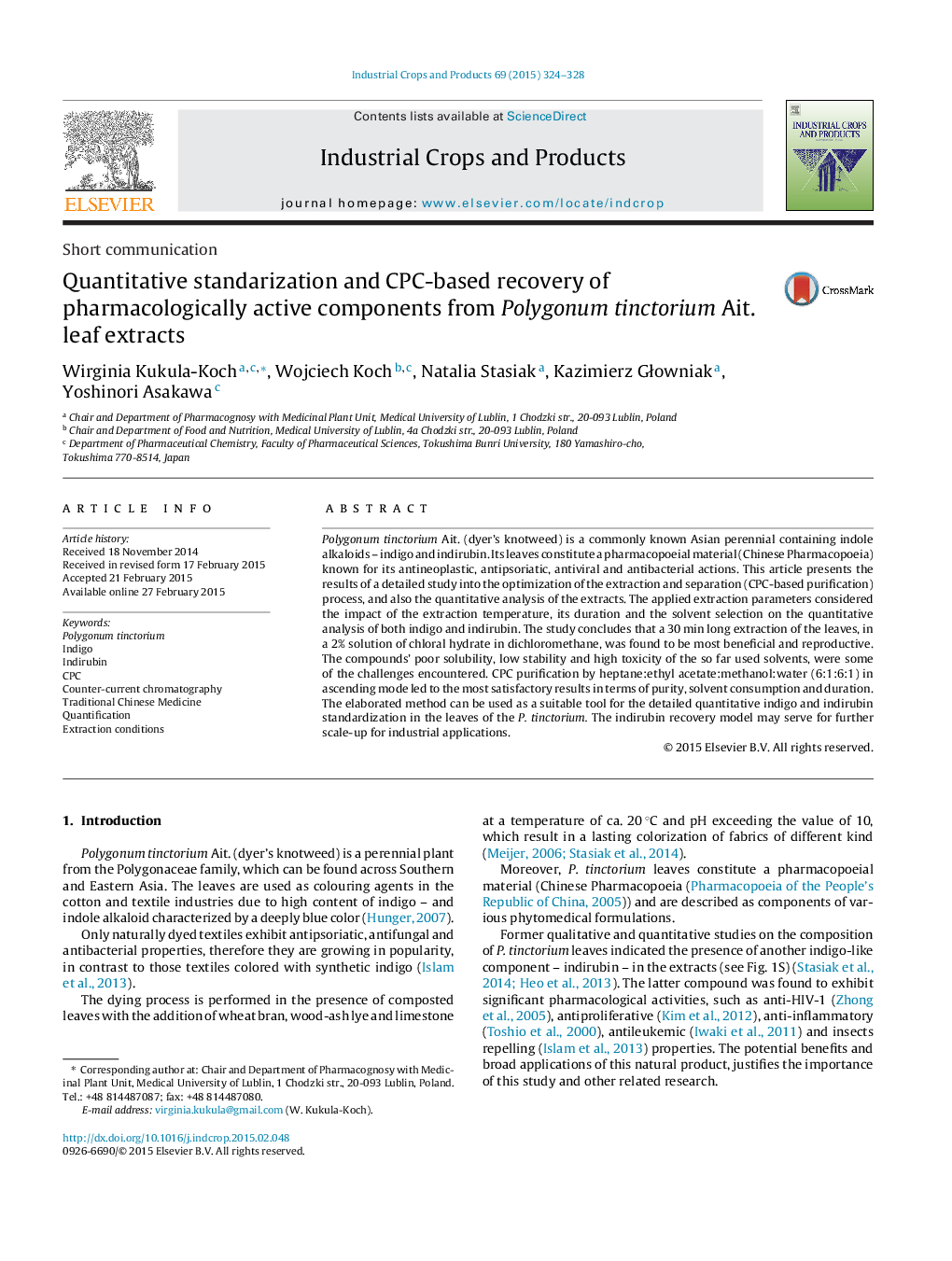| Article ID | Journal | Published Year | Pages | File Type |
|---|---|---|---|---|
| 4512965 | Industrial Crops and Products | 2015 | 5 Pages |
•Scale-up feasible CPC-based recovery of indirubin was performed from Polygonumtinctorium.•Methanol:water (7:3) HPLC isocratic separation was found the most efficient.•Temperature, solvent and sonication time influence the extraction efficiency of dyes.•30 min long sonication in 2% sol. of chloral hydrate in DCM was found optimal.•Solvent to solute ratio [mg/mL] of 1:1 enabled the highest recovery of the dyes.
Polygonum tinctorium Ait. (dyer’s knotweed) is a commonly known Asian perennial containing indole alkaloids – indigo and indirubin. Its leaves constitute a pharmacopoeial material (Chinese Pharmacopoeia) known for its antineoplastic, antipsoriatic, antiviral and antibacterial actions. This article presents the results of a detailed study into the optimization of the extraction and separation (CPC-based purification) process, and also the quantitative analysis of the extracts. The applied extraction parameters considered the impact of the extraction temperature, its duration and the solvent selection on the quantitative analysis of both indigo and indirubin. The study concludes that a 30 min long extraction of the leaves, in a 2% solution of chloral hydrate in dichloromethane, was found to be most beneficial and reproductive. The compounds’ poor solubility, low stability and high toxicity of the so far used solvents, were some of the challenges encountered. CPC purification by heptane:ethyl acetate:methanol:water (6:1:6:1) in ascending mode led to the most satisfactory results in terms of purity, solvent consumption and duration. The elaborated method can be used as a suitable tool for the detailed quantitative indigo and indirubin standardization in the leaves of the P. tinctorium. The indirubin recovery model may serve for further scale-up for industrial applications.
Graphical abstractFigure optionsDownload full-size imageDownload as PowerPoint slide
